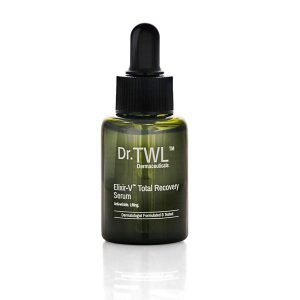Ingredient Spotlight: Cica for Your Skin
In this ingredient spotlight series, we’ll be highlighting active ingredients and how they are beneficial to your skin health! In this article, we will break down the active ingredient Cica, and go through the science behind its benefits for your skin.
What is Cica?
Cica is the colloquial term for the herb Centella asiatica, a popular ingredient in skincare. It is a species belonging to the flowering plant family Apiaceae family. Cica is also known as gotu kola, Indian Pennywort, and tiger grass. It was used as a culinary vegetable and medicinal herb for hundreds of years to treat small wounds, scratches, burns, hypertrophic wounds healing, and eczema. On top of that, C. asiatica provides a rich source of natural bioactive substances that can be used in cosmetics.
How is it beneficial for our skin?
“Centella Asiatica is a traditional herb that is popular in China and across East Asia. The key thing about Centella Asiatica, for the last 10 years there has been increasing research to show that it has been helpful in alleviating wounds, and helps with scarring. Even with scars that occur after surgery or after injuries, we do compound certain ointments with specific percentages of Centella Asiatica. This helps to keep the scar looking good as possible, and essentially helps with the wound healing process”, accredited dermatologist, Dr. Teo Wan Lin.
Among the various beneficial chemicals Cica contains, the most important chemicals are triterpene compounds – asiaticoside, madecassoside and asiatic acid, due to its dermatological and pharmacological activities. In short, it gives Cica its antioxidant, anti-inflammatory, anti-aging and cellulite reduction properties.
Anti-inflammatory
The anti-inflammatory properties of Centella asiatica extract are related to its saponins, especially asiaticoside. Research has shown that asiaticoside inhibits proinflammatory cytokines, reducing inflammation in the skin.
Saponins in Cica extract also possess anti-inflammatory properties. It has a calming effect on the skin and reduces its sensitivity to irritants. Hence, this can reduce redness in skin and also help to improve the skin barrier function (decrease in TEWL and pH value), which is related to quicker skin return to homeostasis after exposure to irritants.
Additionally, a study published in Bioscience, Biotechnology, and Biochemistry found that when researchers applied madecassoside to human skin cells that had been stimulated with P.acnes – the bacteria often implicated in acne, they found reduction in inflammation associated with acne.
Anti-aging
One study published in the International Journal of Cosmetic Science detailed 27 women applying asiaticoside cream to one eye, and a control cream to the other eye twice a day for 12 weeks. The results were that there was significant improvement in wrinkle depth in the asiaticocide cream group compared to the control group. This suggests that Centella Asiatica can help to reduce wrinkles around the eye.
Furthermore, asiaticoside can induce type I collagen synthesis, thus making it an effective anti-photoaging agent.
Wound healing
Madecassoside is helps to speed up wound healing through increasing antioxidative activity, enhancing collagen synthesis and influencing angiogenesis. In short, Angiogenesis is the process in which new blood vessels form from pre-existing vessels. Furthermore, animal studies show that Centella Asiatica can help to speed up the wound healing process. In particular, the phase in which collagen production is needed to close up the wound.
Asiatic acid is the most active component of Centella Asiatica in speeding up the wound healing process. It induces expression of molecules that are responsible for extracellular matrix remodeling of skin, and modulation of inflammation in fibroblasts.
Hydration
Skincare formulations with Cica extract also hydrates the skin. It increases hydration of the stratum corneum (outer layer of skin) and improves epidermal barrier function. This is due to the presence of triterpene saponins, a hydrophilic sugar chain (glycone) found in Cica that can bind water within an occlusive layer. Research has concluded that the higher the concentration of Centella asiatica extract, the less transepidermal water loss (TEWL) in our skin.
Cellulite reduction
Centella asiatica extract can also treat cellulite, also known as liposclerosis. The formation of cellulite is by an increase in the volume of fat cells which causes constriction of small blood vessels. This causes “distended” fat cells in this tissue, particularly around the hips, buttocks, thighs and arms. Cica normalizes the metabolism occurring in the cells of the connective tissue, and shows anti-inflammatory effects, draining activity and regulates microcirculation. Triterpenes of C. asiatica increases the metabolism of lysine and proline, which are the amino acids building the collagen molecule. Thus, improving nutrition of tissues and connective vascular stimulation. This reduces cellulite.
Are there any side effects?
Application of Centella Asiatica in the recommended doses is not toxic and has no side effects. However, excessive use of Centella asiatica may result in local allergic reactions and burning, especially when used externally and subcutaneously.
Centella asiatica extract is an effective ingredient not only in anti-aging cosmetics, but also for improving skin hydration. Therefore, Centella asiatica is especially useful in moisturizing cosmetic formulations, and to complement the treatment of dry and sensitive skin.
SHOP THE STORY:

References:
Shen, X., Guo, M., Yu, H., Liu, D., Lu, Z., & Lu, Y. (2019). Propionibacterium acnes related anti-inflammation and skin hydration activities of madecassoside, a pentacyclic triterpene saponin from Centella asiatica. Bioscience, biotechnology, and biochemistry, 83(3), 561–568. https://doi.org/10.1080/09168451.2018.1547627
Somboonwong, J., Kankaisre, M., Tantisira, B., & Tantisira, M. H. (2012). Wound healing activities of different extracts of Centella asiatica in incision and burn wound models: an experimental animal study. BMC complementary and alternative medicine, 12, 103. https://doi.org/10.1186/1472-6882-12-103









Leave a Reply
Want to join the discussion?Feel free to contribute!